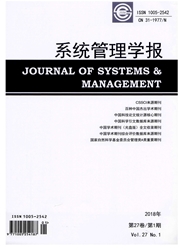

 中文摘要:
中文摘要:
基于城市遭遇的自然、环境、人文3大类灾害,提出了灾害多级联动概念。通过分析灾害多级联动的模式,构建了计算城市综合承灾能力的灾害多级联动线性模型,主要包括同类型灾害多级联动模型和不同类型灾害多级联动模型。其中,同类型灾害多级联动模型可分为自然灾害间的多级联动、环境灾害间的多级联动,以及人文灾害间的多级联动。不同类型灾害多级联动模型包括原生自然灾害与次生环境灾害、次生人文灾害的多级联动、原生环境灾害与次生人文灾害的多级联动、原生人文灾害与次生环境灾害的多级联动3种。在此基础上,选取北京、上海、广州、深圳4个城市为样本,根据建立的城市综合承灾能力评价指标体系,收集4所城市2008与2009年的数据,分别计算不同灾害联动模式下4所城市2年的综合承灾能力值,并进行比较分析。结果表明,在同类型灾害多级联动模型及不同类型灾害多级联动模型下,4个城市在2008及2009年的承灾能力评价结果排名情况为上海、北京、广州、深圳。
 英文摘要:
英文摘要:
Considering three main disasters, namely, natural, environmental, and human disasters that cities encounter frequently, we propose the concept of multilevel disaster linkage. By analyzing the modes of multilevel disaster linkage, we discover the linear mode of multilevel disaster linkage for urban integrated disaster-carrying capacity. The linear mode of multilevel disaster linkage has two types, the multilevel disaster linkage of the same type disasters and the multilevel disaster linkage of different type disasters. The first type can be further divided into the multilevel disaster linkage of natural, environmental, and human disaster. The second type includes three modes- pristine natural disasters lead to secondary environmental disasters and secondary human disasters, pristine environmental disasters lead to secondary human disasters, pristine human disasters lead to secondary environmental disasters. We then select Beijing, Shanghai, Guangzhou and Shenzhen as samples. Using the evaluation index systems of the three kinds of disasters, we collect data of the four capacities for different modes of disaster multilevel cities and calculate their integrated disaster-carrying linkage. We compare and analyze the strength and weakness of each city. The results show that the urban integrated disaster carrying capacity of Shanghai ranks first, followed by Beijing, but the four cities are more or less at the same level.
 同期刊论文项目
同期刊论文项目
 同项目期刊论文
同项目期刊论文
 Comparative study on economic contribution rate of education of China and foreign countries based on
Comparative study on economic contribution rate of education of China and foreign countries based on 期刊信息
期刊信息
